Bee-louse
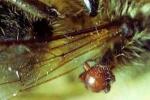
If the bee-wolf is an armed knight-robber, then the bee-louse (brow) is by nature not at all like him. First of all, it must be said that it also resembles a louse like a wolf
Home-made wine
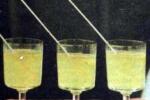
Scientists believe that the opportunity to produce weak alcoholic beverages from honey, fruit juices, grape berries, etc. emerged over 8 thousand years to our era. In the old days, wine was produced in the 16th
Transportation of bees

The work begins with the development of a calendar plan for the use of bees for pollination of crops. Then they get acquainted with the basic methods of using bees on pollination of plants, taking
Removal of the brood brood

On the photo: 1 – honeycomb; 2 – frame with a drone brood. The proposed method of combating varroatosis consists in removing bee colonies from the nest and destroying the tartar brood affected by the
Internal structure of the bee’s body

Muscles. The bee can produce a variety of movements: crawl, fly, bend the abdomen and sting, clean the antennae, perform various kinds of work – collect nectar and pollen, build honeycombs, etc. In addition, the
Replenishment of fodder stocks and top-dressing of bees
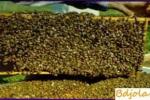
Since in the early spring for bees the food and heat in the nest are the most important, then all families that have little or no honey should be given enough feed to have 6-7
How to cook a quick-witted honey

150 g of honey, 200 g of sour cream, 300 g of flour, 200 g of sugar, 2 eggs, 2 tbsp. tablespoons lean oil, 1 hour Lozhke soda, chopped cinnamon and cloves. Sugar, eggs, honey,
Where to get the bees
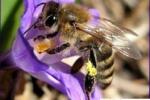
It is best to establish contact with the local, regional, city or regional society of beekeepers-lovers. Such societies are now organized almost everywhere. They often give bees to schools with beehives, patronize school apiaries and
Sopka for controlling weeds in the apiary

This hoe will be useful, to everyone who has a household plot. It has a simple design and a rather awkward manufacturing technology. The hood consists of brackets 1, at one end of which there
Cabbage juice with honey

The juice of cabbage has long been used for medicinal purposes. The ancient Romans believed that this juice provides the strength of the body, resistance to various diseases, removes insomnia, calms the headache. It is
Spring top dressing with warm sugar syrup
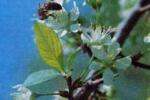
The bees are waiting impatiently for spring. As soon as a warm day (10-12 њ in the shade) comes out, they hurry to fly around in order to get rid of the feces. And when
How to remove a swarm of bees
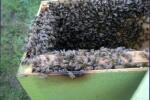
To remove the swarm, I use a simple and convenient device. It consists of a stand and a set of metal tubes. To the length of pipe 2, three supports 1 are welded from the
Coniferous honey

Needles are a valuable vitamin concentrate. According to the content of vitamin C, needles are 10 times more active than potatoes and 4 times lemon. In addition, many vitamins A (carotene) and K. are abundant
Carefully snakes

In early August, I transported bees from sunflower to tobacco. The field of tobacco was near the forest. Apiary placed in a clearing. During the inspection, the hives in one of them suddenly discovered a
Portable hive for poison treatment

Received in the apiary several dozen bees can live in a conventional box for no more than one day. This, of course, prevents many patients from properly treated, because they have to go to the
